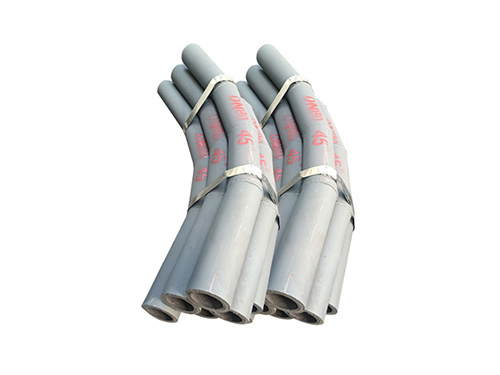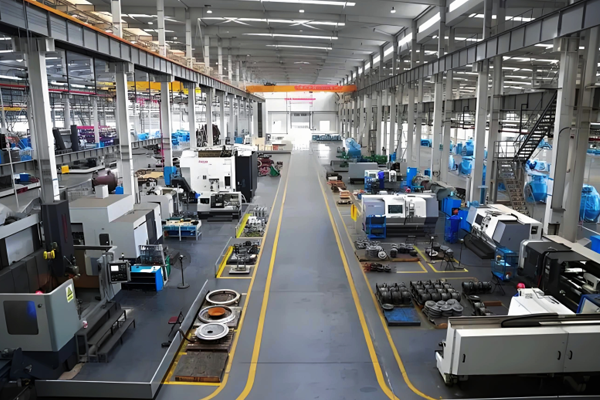
Wear-Resistant Bend
A Wear-Resistant Bend is a specialized pipe fitting designed to withstand severe abrasion caused by the flow of granular, corrosive, or high-velocity media. It is widely used in industries where pipelines handle materials like sand, gravel, coal ash, slurry, or chemicals, which can quickly erode standard bends. Below is a detailed overview of its features, materials, types, applications, and key considerations:
1. Core Functions and Challenges Addressed
In pipeline systems, bends are critical for changing flow direction (e.g., 90°, 45°, 180° turns). However, the centrifugal force of fluid or solid particles creates intense friction at the inner wall of the bend, leading to wear, thinning, and eventual leakage. Wear-resistant bends solve this by:
Reducing abrasion rates by 5–10 times compared to standard carbon steel bends.
Extending service life in harsh environments (e.g., from months to years in mining slurry pipelines).
Minimizing maintenance downtime and replacement costs.
2. Key Materials for Wear Resistance
The choice of material directly determines the bend’s abrasion resistance, corrosion resistance, and cost. Common options include:
- High-Chromium Cast Iron (HCCI)
Composition: 15–30% Cr, 2–5% C, with chromium carbides (Cr₇C₃) forming a hard, wear-resistant matrix.
Hardness: 60–65 HRC (far higher than carbon steel’s 15–25 HRC).
Advantages: Excellent resistance to low/medium impact abrasion (e.g., sand, coal dust).
Limitations: Brittle (poor impact resistance), not suitable for high-velocity or large-particle media.
- Abrasion-Resistant Steel Plates
Examples: AR400, AR500 (domestic), HARDOX 400/500/600 (Swedish).
Hardness: 400–600 HBW, with a tough base metal (low-alloy steel) and a hardened surface.
Advantages: Balances wear resistance and toughness, ideal for high-impact scenarios (e.g., ore slurry).
Applications: Fabricated into bends via welding; suitable for large-diameter pipelines (DN500+).
- Ceramic-Lined Composites
Structure: Ceramic tiles (alumina, Al₂O₃) bonded to a steel shell via adhesives or welding.
Hardness: Alumina ceramics reach 85–90 HRA (second only to diamond).
Advantages: Near-impervious to abrasion from fine particles (e.g., fly ash, cement slurry).
Limitations: Ceramic is brittle; vulnerable to large impacts or thermal shock.
- Alloy Steels
Examples: 12Cr13 (martensitic stainless steel), 20CrMo (low-alloy steel).
Features: Combine moderate wear resistance with corrosion resistance and machinability.
Applications: Mildly abrasive and corrosive environments (e.g., chemical wastewater).
- Rubber-Lined Steel
Material: Natural rubber or polyurethane (PU) lining on a steel substrate.
Advantages: Elasticity absorbs impact, ideal for wet, low-velocity abrasion (e.g., slurry with fine particles).
Limitations: Poor heat resistance (max temp ~80°C); prone to aging in sunlight.
3. Types of Wear-Resistant Bends
Classified by structure and manufacturing process:
- Solid Cast Bends
Made via casting high-chromium iron or alloy steel in one piece.
Pros: No seams, uniform wear resistance; suitable for small diameters (DN50–300).
Cons: Heavy; difficult to fabricate for large sizes.
- Fabricated Welded Bends
Constructed by cutting and welding wear-resistant steel plates (e.g., HARDOX) or ceramic-lined segments.
Pros: Customizable for large diameters (DN300–2000) and complex angles (e.g., 30°, 60°).
Cons: Weld seams may be weak points if not properly treated.
- Tapered/Thickened-Wall Bends
The outer curve (most abraded area) is thickened with extra wear-resistant material.
Design: Optimizes material usage by reinforcing high-wear zones.
- Elbow with Flow Modifiers
Features internal baffles or streamlined shapes to reduce turbulence and redirect particle impact away from the outer wall.
4. Applications in Key Industries
Wear-resistant bends are essential in sectors with aggressive material transport:
Mining & Mineral Processing: Slurry pipelines (ore, tailings) use ceramic-lined or AR steel bends.
Power Generation: Fly ash transport in coal-fired plants relies on high-chromium or ceramic bends.
Construction Materials: Cement, sand, and gravel pipelines use rubber-lined or fabricated steel bends.
Chemical & Petrochemical: Corrosive/abrasive media (e.g., catalyst slurry) use alloy steel or composite bends.
Wastewater Treatment: Sewage with grit uses rubber-lined bends to resist both abrasion and corrosion.
5. Selection and Installation Tips
Match Material to Media:
Fine, low-impact particles (fly ash): Ceramic-lined or high-chromium bends.
Large, high-impact particles (ore): AR steel or rubber-lined bends.
Corrosive + abrasive media: Alloy steel (e.g., 12Cr13) or ceramic-polymer composites.
Consider Flow Velocity: Higher velocity (≥5 m/s) demands harder materials (e.g., alumina ceramics).
Temperature Limits: Avoid rubber-lined bends for high-temp media; use alloy steel or ceramics instead.
Installation: Ensure proper alignment to minimize turbulence; weld seams should be ground smooth to prevent localized wear.
Maintenance: Regularly inspect for thinning (via ultrasonic testing) or ceramic tile detachment.
Summary
Wear-Resistant Bends are engineered to combat abrasion in demanding pipeline systems, with material selection being the cornerstone of their performance. From high-chromium cast iron for small-diameter lines to fabricated HARDOX steel for large-scale mining projects, these bends play a critical role in ensuring long-term reliability and cost efficiency in industrial operations.

+86-15533769121

Jango

jango@yuntaopiping.com

Beixiaozhuangzi Industrial Zone, Mengcun Hui Autonomous County
Copyright © 2025-2026 http://www.yuntaopiping.com. All Rights Reserved Yuntao Piping Group.,Ltd.Copyright



